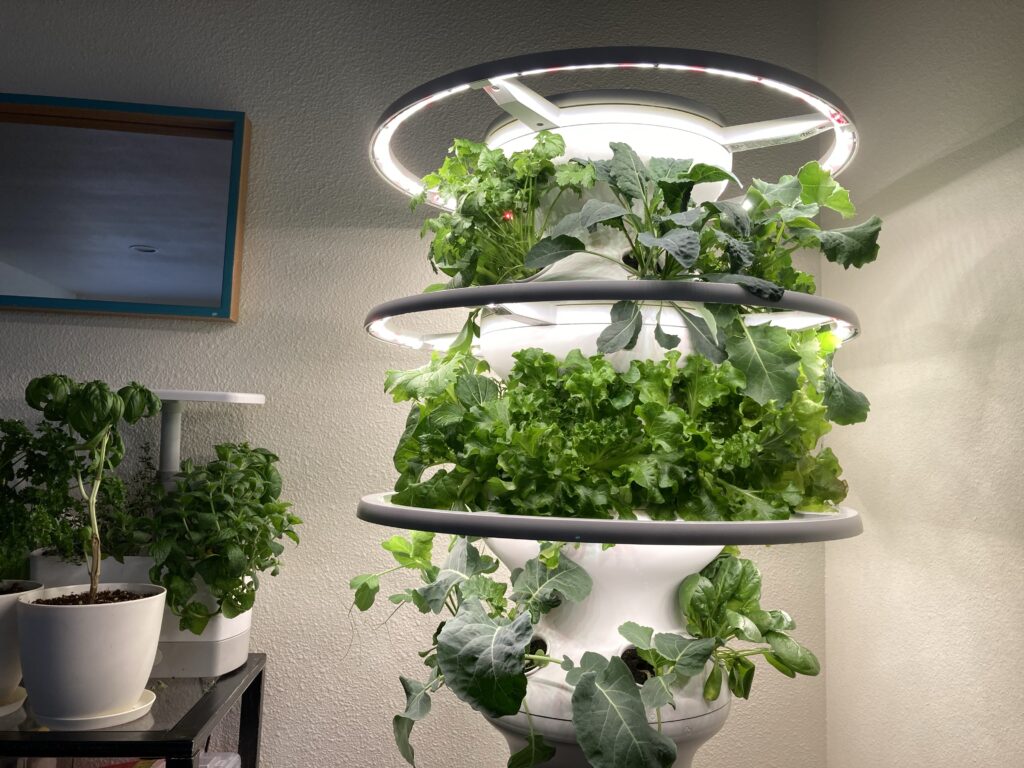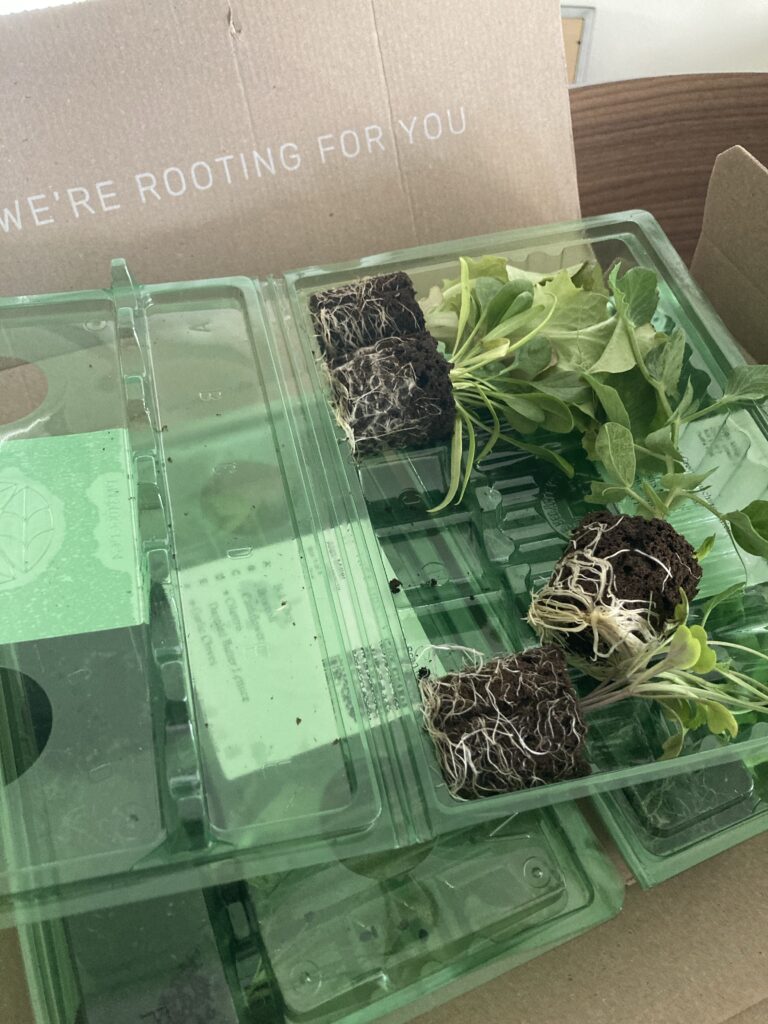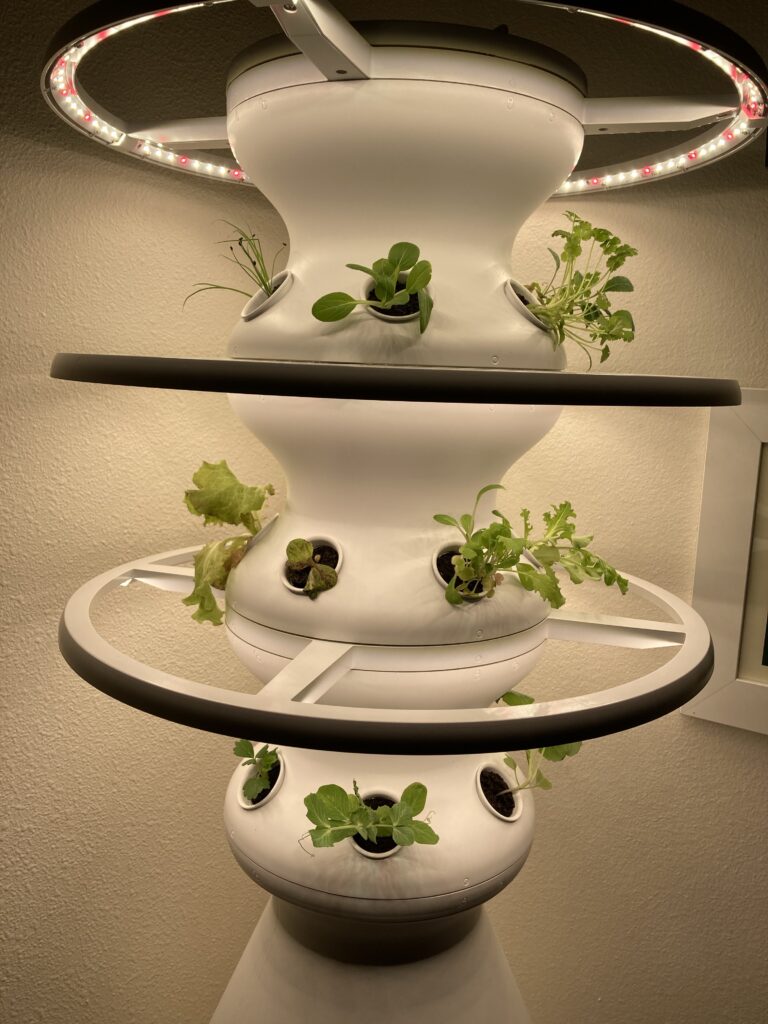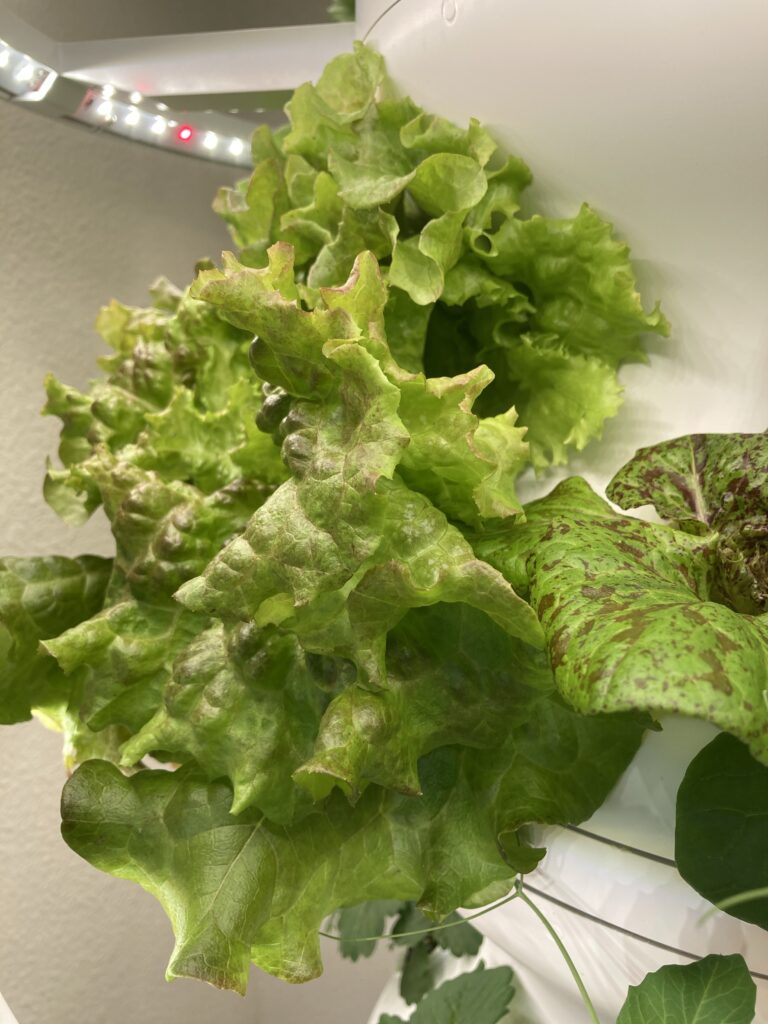Preparedness is a hobby in our household. We have go bags for fire season and a solar powered portable generator for bug outs and power outages. We think ahead on common emergencies and prepare.
Because we find this to be a fun time, we decided to explore hydroponics to grow herbs, vegetables and fruits inside during the winter. It’s more a pandemic hobby than a preparedness hobby but why not get double the enjoyment? Our first step in learning about hydroponics was to purchase a table top AeroGarden for herbs. Nothing like a little fresh cilantro to dress up emergency rice and beans. But really it’s about having fresh basil to put on a salad or thyme for a roasting chicken or mint for strawberries. We sprouted 6 different herbs and watched them go from seedling to full grown plant within six weeks. From there we had more trouble keeping the dill trimmed and the mint from choking out its neighbors. This experiment went so well we wanted to try out something bigger.

For Christmas we decided it was time to go big. A friend of ours recommended a type of hydroponic system called a LettuceGrow. It’s a farm stand tower with circular growth rings that takes up just 2 feet by 2 feet and looks like something you’d see on a spaceship.

We had been a bit worried it would be too hard to grow a full 18 plant hydroponics system. But it was easy to make picks and we felt like we didn’t have enough space. We had decided to grow two types of kale, red & green leaf lettuce, spinach, bok choi, cilantro, strawberries, green beans, and chives. We’ve got jalapeño, peppers & tomatoes planned for summer.

It was easy to set up the hydroponic stand (it’s just a water pump and a timer for the lights) and even easier to start with already sprouted seedlings from LettuceGrow. We placed it next to an end table where a small bookshelf used to be. It took up about the space you’d expect a large fern to require. It’s more decors than elaborate equipment in feel. Though it takes a few week to reach its full potential. When we seeded then it didn’t look like much. Definitely more alien ship than lush vegetation.

But within three weeks the seedlings grew with 14 hours a day of red light. It was a source of much enjoyment each day to check on the seedlings sprouting each day. Highly recommend for long bouts indoors. And the growth after just 21 days is almost ready to eat. Without using much electricity. We calculated it out to an additional 14 cents on our bill.

Red Leaf Lettuce 
Bok Choy & Cilantro 
Mixed Greens & Green Leaf Lettuce